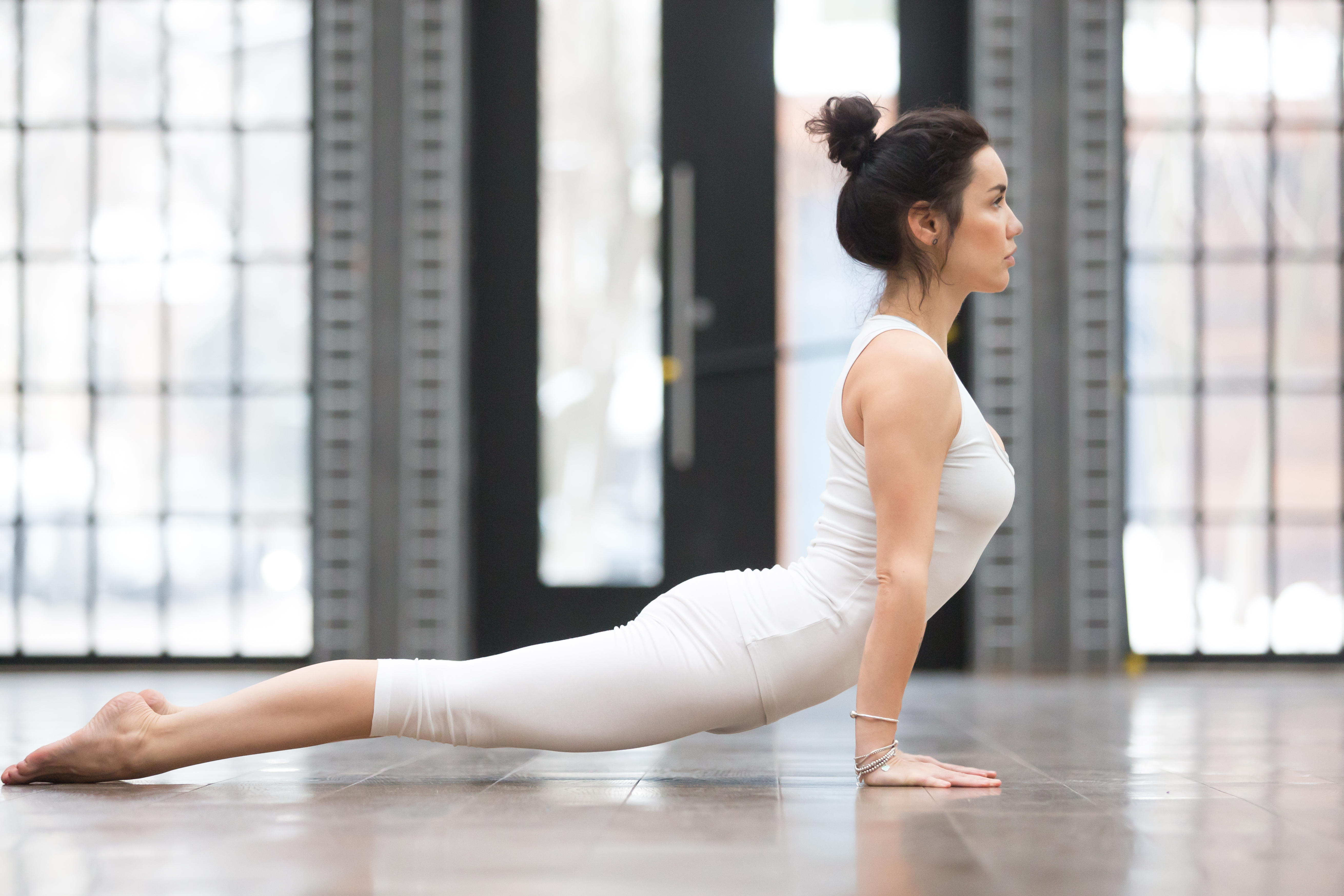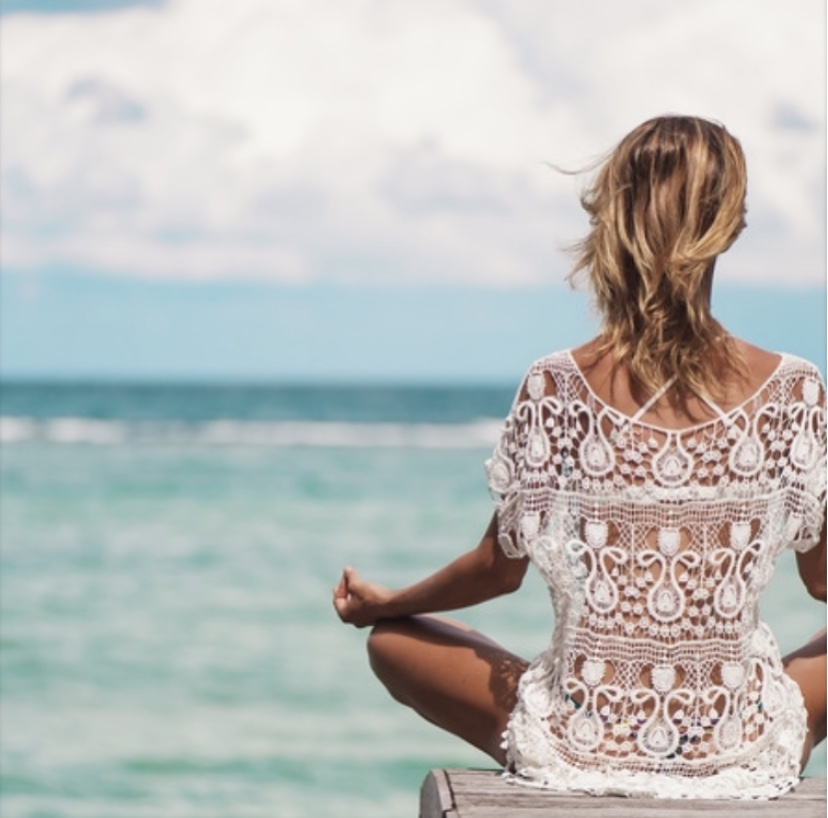
As long understood in Eastern medicine, unprocessed emotional grief is suppressed pain that can become lodged in our bodies. This grief or old trauma disturbs our connection with our physical selves. Intentional mindfulness work, like yoga and pranayama can help us move through these emotional roadblocks.
Multiple studies have found a mindfulness link that yogis have practiced for thousands of years: intentional breathing and mindfulness activates the parasympathetic nervous system allowing for relaxation of muscle tension and reduction of heart rate. Studies show that the health benefits of practicing mindfulness can help ease chronic pain and reduce stress[1] and increasing amounts of research show that habitual thoughts and emotions impact the onset of illness – including arthritis and cancer.[2][3] Neurologically, mindfulness practice can strengthen the prefrontal cortex and has been shown to relieve the effects of trauma[4]
In mindfulness practices, we are prompted to be present in the moment, connect with our bodies and perform emotional regulation. Our self-sensing ability, or interoception, is essential for navigating life in the present moment. This ability is further developed by practicing mindfulness. It becomes a service to ourselves and to others to perform heart-opening poses.
Here are five poses for working through and releasing stuck pain surrounding the heart. Breathing is key. Please be cautious and listen to your body along the way for when to possibly hold back or modify.

Five Heart-Opening Poses
Cobra – Bhujangasana
Start by lying on your stomach with the legs extended and the tops of your feet flat on the mat. Plant the palms next to the lower portion of the rib cage and hug the elbows inward. On an inhale, press down through the palms and float the top of the body off of the mat around 5 or 6 inches while continuing to draw the elbows towards the torso. Gliding the shoulder blades down the back, take a few breaths, allowing the ribs to expand on your inhale and releasing the breath on your exhale.
Upward Facing Bow – Urdhva Dhanurasana
Lying on your back, bend the knees and plant the feet on the ground close to your sit bones. Plant the hands framing the head with the fingertips facing the shoulders and fingers spread wide. Keep the feet parallel with one another and both feet pressing evenly on the floor. On an exhale, press down through the palms and feet engaging the core as you lift the hips and head off of the mat rising to full upward facing bow. Hug the elbows in towards one another and breathe. To exit from the pose, tuck the chin and slowly lower down starting with the head, shoulders and hips resting onto the mat.
Bow – Dhanurasana
Lying on the stomach, draw the arms down by your sides with the fingertips pointed towards your feet. Bend at the knees so that the feet are flat as though they are pressing on the ceiling. On your next inhale, raise the gaze and upper chest off of the mat, engaging through the core, as your hands reach back to hold the ankles. The knees and tops of the thighs will lift off of the mat. Relax the jaw and relax the back of the neck as you breathe. The sternum presses forward and you find more lift as you press the ankles into the hands. By slightly tucking the chin, feel more space created at the top of the neck. Imagine drawing the feet back and create a little less space in-between the knees.
Sphinx – Ardha Bhujanagasana
Lying on your stomach, allow the legs to extend and and rest the legs hips width apart from each other. Place your elbows directly under your shoulders with your forearms and palms pressing into the mat. The forearms should rest parallel to each other. Spread the finger tips wide. Breathe as you draw the shoulder blades down the back. On your next few breaths, imagine drawing the sternum even more forward as you maintain length and space through the back of the neck. Relax the glutes.
Cow – Bitilasana
Starting on all fours, root down through the palms and allow the tops of your shins and tops of your feet to rest on the mat. Find neutrality in the pelvis. On an inhale, release the belly towards the mat while lifting the gaze and tail towards the sky. The chest draws forward.
[1] – Ludwig, D.S., & Kabat-Zinn, J. (2008). Mindfulness in medicine. The Journal of the American Medical Association, 300(11), 1350-1352.
[2] Astin JA Shapiro SL, Eisenberg, DM and Forys, KL (2003) Mind-Body Medicine State of the Science Journal of American Board of Family Medicine 16 (2) 131-147.
[3] Brower, V (2006) Mind-Body Research Moves towards the Mainstream, EMBO Reports 7(4) 358-361.
[4] – Taren, AA., Creswell, JD, Gianaros, PJ., (2013). Dispositional Mindfulness Co-Varies with Smaller Amygdala and Caudate Volumes in Community Adults. PLoS One 22;8(5):e64574. doi: 10.1371/journal.pone.0064574

